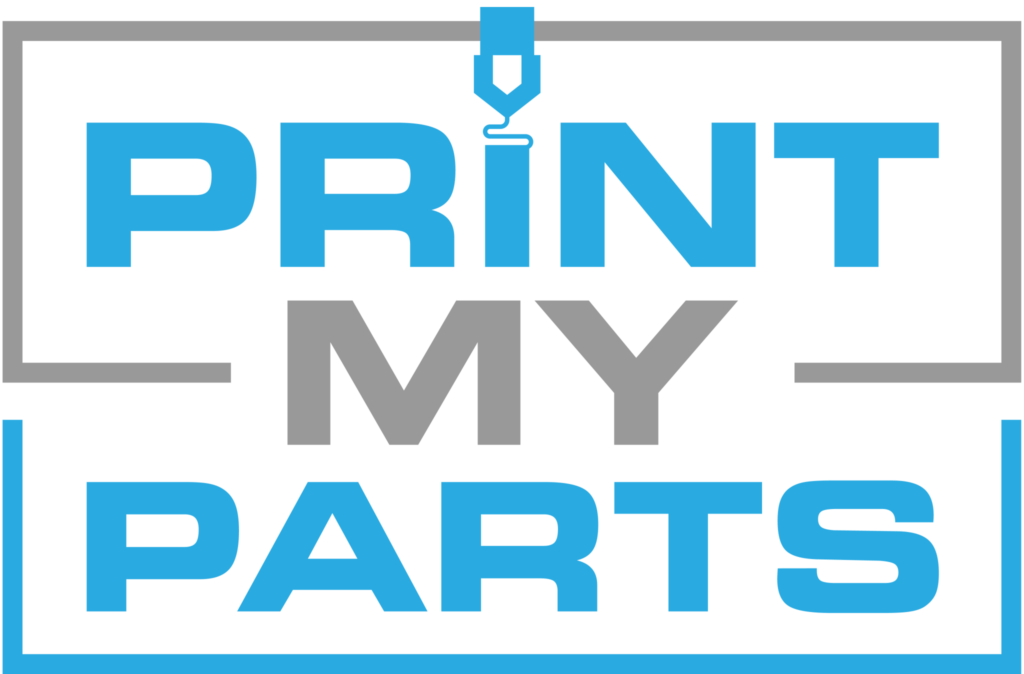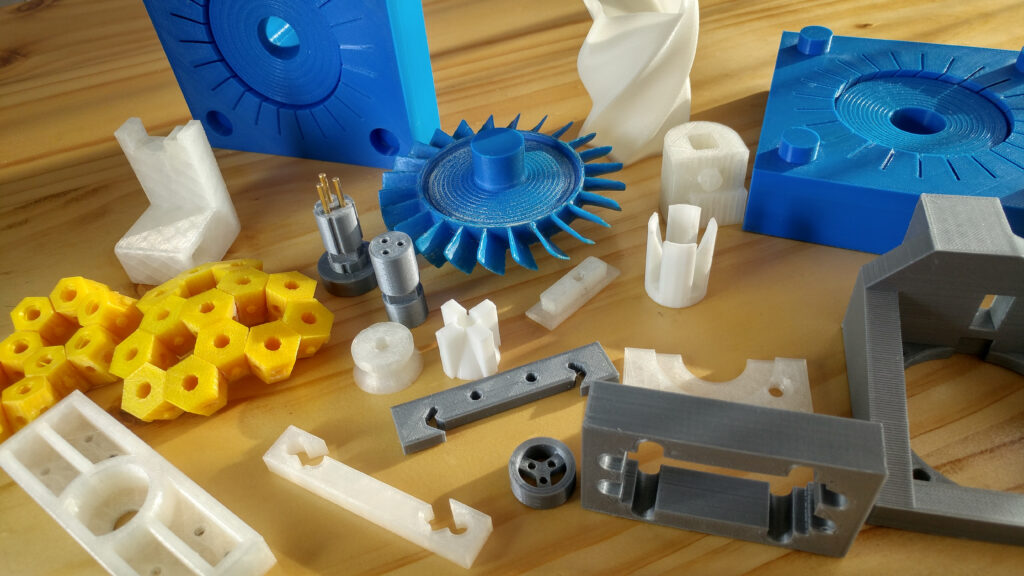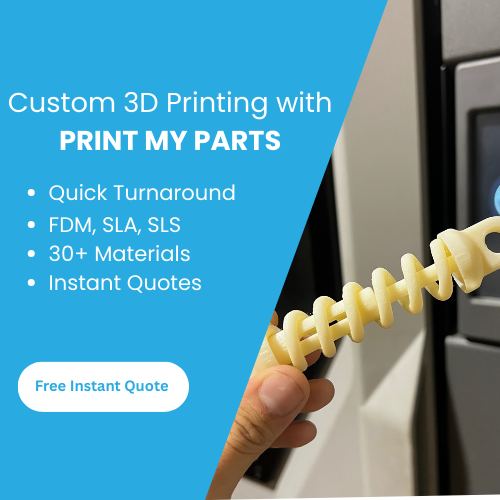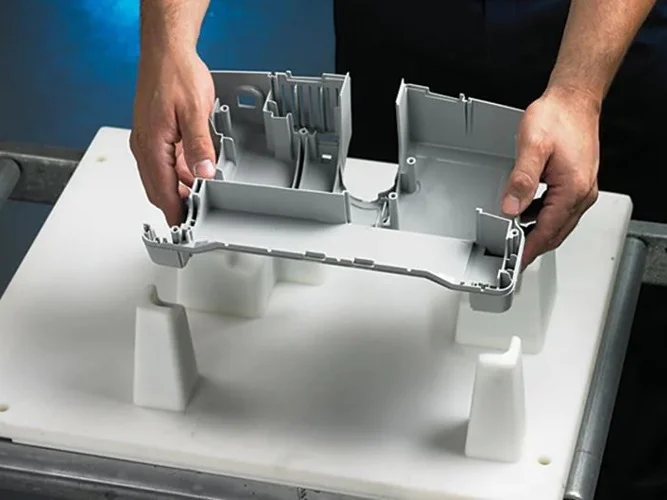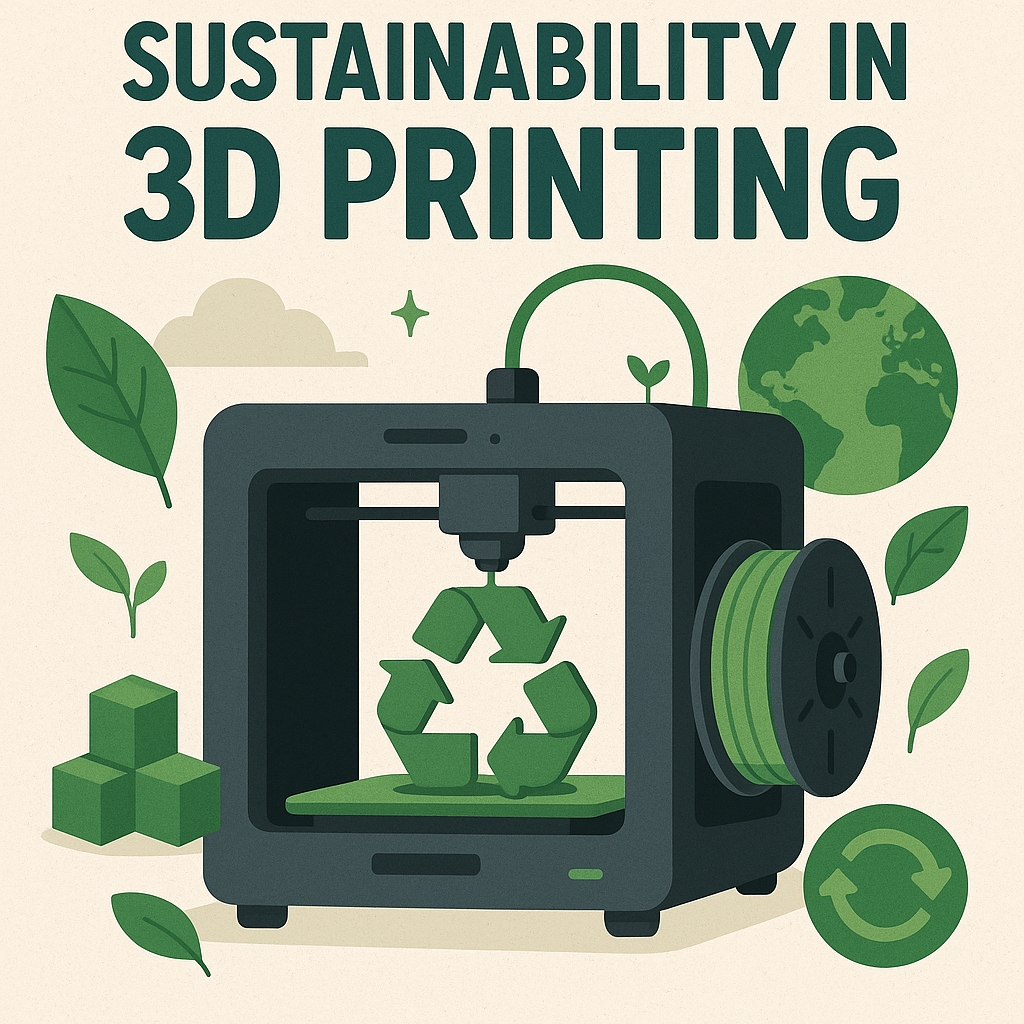In the dynamic world of 3D printing, Fused Deposition Modeling (FDM) stands out as a popular and accessible technology, especially for those new to the realm of additive manufacturing. At its core, FDM 3D printing involves the precise layering of heated materials to create three-dimensional objects. This technology has revolutionized prototyping and manufacturing, offering unparalleled flexibility in design and material choice.
As a beginner (or even as an advanced user!), understanding the vast array of materials available for FDM 3D printing can be overwhelming. Each material brings its unique set of properties and capabilities, making the choice crucial for the success of your project. Whether you’re an enthusiast embarking on a personal project or a professional exploring cost-effective prototyping solutions, this guide aims to demystify the selection process.
In this comprehensive guide, we’ll explore the different types of FDM 3D printing materials, delve into the factors you should consider when choosing a material, highlight the common applications of various materials, and provide practical tips for first-time users. By the end of this article, you’ll have a solid understanding of how to navigate the world of FDM 3D printing materials, ensuring your next project not only takes shape but excels in its intended purpose.
Introduction to FDM 3D Printing
Fused Deposition Modeling (FDM), also known as Fused Filament Fabrication (FFF), is a key technology in the world of 3D printing. This method is cherished for its simplicity and cost-effectiveness, becoming a pivotal approach in rapid prototyping and personal manufacturing. For newcomers to 3D printing, FDM serves as an accessible entry point for creating complex and functional designs.
The FDM Process: How Does it Work?
FDM operates by extruding thermoplastic filaments through a heated nozzle, melting the material. This melted filament is then precisely laid down in layers on the build platform. Each layer cools and solidifies quickly, and the build platform lowers to accommodate the addition of the next layer. This process repeats until the entire object is completed.
FDM is celebrated for its straightforward approach and ability to create durable parts with reasonable accuracy. It’s particularly favored for producing prototypes or parts quickly, making it an ideal choice for hobbyists, educators, and professionals.
Materials in FDM Printing: Exploring the Options
A significant advantage of FDM 3D printing is the diverse range of materials available, each offering unique properties like heat resistance, strength, and flexibility. The most commonly used materials include:
- PLA (Polylactic Acid): Easy to use and environmentally friendly, PLA is derived from renewable resources like cornstarch, making it biodegradable.
- ABS (Acrylonitrile Butadiene Styrene): Known for its strength and heat resistance, ABS is a popular choice for functional parts, though it can emit fumes during printing.
- PETG (Polyethylene Terephthalate Glycol): This material combines PLA’s ease of printing with ABS’s strength and durability, making it an excellent all-rounder.
- TPU (Thermoplastic Polyurethane): TPU is renowned for its flexibility, durability, and resistance to abrasion, making it ideal for objects that require a degree of pliability, like phone cases or footwear.
FDM 3D printing exemplifies the democratization of manufacturing. Its ease of use, affordability, and diverse material options make it an excellent platform for creativity and practical application. Whether you’re a hobbyist bringing your ideas to life or a professional prototyping a new product, FDM 3D printing offers the flexibility and tools needed to embark on your 3D printing journey.
Types of FDM 3D Printing Materials
When diving into FDM 3D printing, one quickly realizes the significance of choosing the right material. Each material not only behaves differently during the printing process but also impacts the final properties of the printed object. Let’s explore some of the most common FDM 3D printing materials, highlighting their characteristics and typical uses.
- PLA (Polylactic Acid):
- Characteristics: PLA is known for its ease of printing, low warping, and odorless nature. It offers good detail, but it’s not as temperature resistant or strong as some other materials.
- Uses: Ideal for cosmetic prints, prototypes, and low-stress applications. It’s widely used in educational settings due to its ease of use and safety.
- ABS (Acrylonitrile Butadiene Styrene):
- Characteristics: ABS is valued for its strength, durability, and heat resistance. It can be more challenging to print with due to its tendency to warp and the fumes it emits.
- Uses: Commonly used for functional parts that require durability, like gears, automotive components, and toys.
- PETG (Polyethylene Terephthalate Glycol):
- Characteristics: This material combines the best of PLA and ABS, offering both ease of use and durability. It’s also moisture and chemical resistant.
- Uses: PETG is suitable for both functional and aesthetic pieces, such as mechanical parts, containers, and outdoor applications.
- TPU (Thermoplastic Polyurethane):
- Characteristics: Renowned for its flexibility, TPU can withstand compression and stretching. It’s a bit more challenging to print due to its elasticity.
- Uses: Perfect for objects requiring flexibility, like phone cases, tubes, and wearable items.
Each material requires different printing settings, such as temperature and speed, to achieve the best results. For instance, PLA can be printed on a cold bed, whereas ABS might require a heated bed and enclosed printer for optimal results. TPU, with its flexibility, often needs slower printing speeds to prevent issues during extrusion.
Factors to Consider When Choosing a Material for FDM 3D Printing
Selecting the right material for Fused Deposition Modeling (FDM) 3D printing is crucial to the success of your project. The choice of material can affect the durability, appearance, and functionality of the printed object. Here are some key factors to consider when choosing a material for FDM 3D printing:
- Strength and Durability: Consider the mechanical properties you need. For instance, ABS offers high strength and temperature resistance, making it suitable for parts that need to withstand stress. In contrast, PLA is more brittle and better suited for decorative or low-stress applications.
- Flexibility: If your project requires a degree of flexibility or rubber-like properties, materials like TPU are ideal. They are perfect for creating parts that need to bend or stretch, like flexible joints or phone cases.
- Temperature Resistance: This is a critical factor if your printed object will be exposed to heat. Materials like ABS have a higher melting point compared to PLA, making them more suitable for applications involving higher temperatures.
- Ease of Printing: Some materials are more beginner-friendly than others. PLA, for example, is known for its ease of use, making it a great starting point for those new to 3D printing. Materials like ABS and TPU, which require specific printing conditions, may pose more of a challenge.
- Surface Finish and Aesthetics: Consider the desired look and feel of the finished object. PLA tends to have a glossy finish, while ABS can be sanded and smoothed post-printing for a more professional appearance. PETG offers both a glossy finish and durability.
- Environmental Factors and Safety: Materials like PLA are biodegradable and emit fewer harmful fumes during printing, making them safer for indoor use and environmentally friendly. In contrast, printing with ABS requires good ventilation due to the fumes it emits.
- Cost and Availability: Some materials are more readily available and cost-effective than others. While PLA and ABS are common and relatively inexpensive, specialized materials like flexible or composite filaments may come at a higher cost.
- Purpose of the Print: The intended use of the printed object should guide your material choice. For functional parts like gears or mechanical components, strength and durability are paramount. For decorative items, aesthetics and color choices might take precedence.
Balancing These Factors
Balancing these factors depends on your specific project needs. For example, if you’re creating a functional part for a machine, strength and temperature resistance might be your top priorities. On the other hand, if you’re printing a decorative model, you might prioritize surface finish and ease of printing.
Understanding these factors and how they relate to your project’s requirements will help you make an informed decision, ensuring that your FDM 3D printing endeavor is successful and satisfying.
Common Applications of Different Materials in FDM 3D Printing
The choice of material in Fused Deposition Modeling (FDM) 3D printing is not just about the physical properties; it also defines the potential applications of the printed object. Each material offers unique capabilities, making it suitable for specific uses. Let’s explore the common applications of various FDM 3D printing materials:
- PLA (Polylactic Acid):
- Applications: PLA is ideal for prototyping, educational models, and cosmetic prints. Due to its lower temperature resistance, it’s more suitable for objects that won’t be subjected to high heat or heavy loads.
- ABS (Acrylonitrile Butadiene Styrene):
- Applications: ABS is frequently used for creating functional parts that need to withstand higher temperatures and mechanical stress. Its applications include automotive parts, tools, and toys that require durability.
- PETG (Polyethylene Terephthalate Glycol):
- Applications: PETG combines ease of printing with robustness, making it suitable for both functional and decorative items. It’s often used for mechanical parts, containers, and outdoor components due to its moisture resistance.
- TPU (Thermoplastic Polyurethane):
- Applications: Known for its flexibility and durability, TPU is perfect for objects that need to bend or stretch. Common uses include phone cases, wearable items, and flexible tubing.
Each material brings its strengths to different applications, and understanding these can significantly influence the success of your printing project. For instance, while PLA is great for an initial prototype, ABS or PETG might be better choices for the final functional part due to their higher durability and resistance to temperatures.
Experimentation and Application
Experimenting with different materials is a key part of the 3D printing journey. While PLA might be the starting point for most beginners due to its ease of use, venturing into materials like ABS and PETG can open new doors for more demanding applications. Similarly, experimenting with TPU can add a new dimension to your projects, enabling you to create flexible and resilient parts.
Tailoring Material to Project
The choice of material should always be aligned with the purpose of your 3D printed object. For decorative items or models that don’t require much strength or heat resistance, PLA is an excellent choice. In contrast, for parts that will undergo stress, exposure to heat, or outdoor conditions, materials like ABS and PETG are more appropriate. TPU, with its unique flexibility, is unrivaled for items that need to bend or cushion impacts.
Understanding the common applications of different FDM 3D printing materials is crucial in making an informed decision that ensures the functionality and longevity of your 3D printed projects.
Guidance for Clients Selecting Materials on Our 3D Printing Service Platform
Welcome to the exciting world of FDM 3D printing! As you embark on your journey with our service, choosing the right material for your project is paramount. Here are some tailored tips to help you navigate our material options and ensure the success of your print:
- Identify Your Project Goals: Before selecting a material, consider the purpose of your print. Is it a prototype, a functional part, or a decorative piece? This will guide your material choice, ensuring the final product meets your expectations.
- Explore Our Material Options: Our platform offers a variety of materials, each with unique properties. Familiarize yourself with options like PLA for decorative items or ABS and PETG for durable, functional parts.
- Utilize Our Resources: We provide detailed information on each material, including its properties, best use cases, and printing guidelines. Utilize these resources to make an informed decision.
- Consult with Our Experts: If you’re unsure about the best material for your project, don’t hesitate to reach out to our team. Our experts can provide personalized recommendations based on your project’s specifics.
- Consider Printer Capabilities: Rest assured, our fleet of printers is equipped to handle a wide range of materials. We’ll match your material choice with the perfect printer for optimal results.
- Prioritize Safety and Quality: We ensure the use of high-quality materials that are safe and reliable. Our printing processes are designed to minimize fumes and environmental impact, especially for indoor-use objects.
- Embrace Experimentation: If you’re looking to explore, we encourage trying out different materials for various projects. Our platform allows for experimentation with minimal risk.
- Review Examples of Past Projects: Our website showcases past projects with different materials. Reviewing these can provide a clearer idea of what to expect with each material type.
- Prepare for a Learning Curve: Every 3D printing project is a learning experience. Our team is here to guide you through any challenges and ensure a rewarding journey.
- Stay Updated with New Materials: As we continually expand our material offerings, staying updated will provide you with more options and possibilities for future projects.
By following these guidelines, you can confidently select the right material for your 3D printing project on our platform. Our goal is to make your 3D printing experience seamless and successful, ensuring that the end product perfectly aligns with your vision.
As we’ve explored in this guide, the choice of material in FDM 3D printing is a critical decision that shapes the outcome of your projects. Whether you are a beginner embarking on your first 3D printing adventure or a seasoned professional, understanding the properties and applications of different materials is key to achieving your desired results.
On our 3D printing service platform, we strive to make this selection process as straightforward and informative as possible. By offering a diverse range of materials, detailed guides, and expert assistance, we aim to empower you to make choices that align perfectly with your project needs.
Remember, each material brings its unique set of characteristics and possibilities. PLA offers ease and safety for beginners, ABS provides durability for functional parts, PETG balances ease of use with strength, and TPU introduces flexibility into your creations. Embracing the diversity of these materials opens up a world of creativity and innovation.
We encourage you to experiment, learn, and grow with each project. The world of FDM 3D printing is constantly evolving, and staying curious and informed will help you make the most of this exciting technology. Our team is always here to support you, ensuring that every project you undertake with us is not just a success but also a step forward in your 3D printing journey.
Thank you for choosing our service for your 3D printing needs. We look forward to seeing your ideas come to life and helping you push the boundaries of what’s possible with FDM 3D printing.

